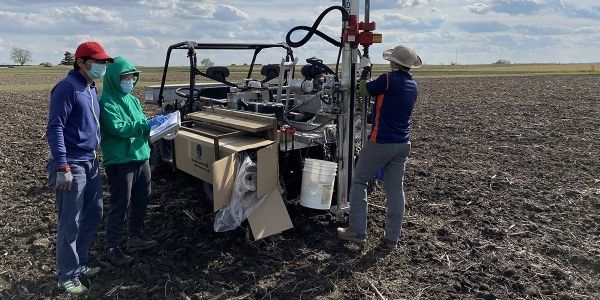Just how much carbon is in the soil? That’s a tough question to answer at large spatial scales, but understanding soil organic carbon at regional, national, or global scales could help scientists predict overall soil health, crop productivity, and even worldwide carbon cycles.
Classically, researchers collect soil samples in the field and haul them back to the lab, where they analyze the material to determine its makeup. But that’s time- and labor-intensive, costly, and only provides insights on specific locations.
In a recent study, University of Illinois researchers show new machine-learning methods based on laboratory soil hyperspectral data could supply equally accurate estimates of soil organic carbon. Their study provides a foundation to use airborne and satellite hyperspectral sensing to monitor surface soil organic carbon across large areas.
“Soil organic carbon is a very important component for soil health, as well as for cropland productivity,” says lead study author Sheng Wang, research assistant professor in the Agroecosystem Sustainability Center (ASC) and the Department of Natural Resources and Environmental Sciences (NRES) at U of I. “We did a comprehensive evaluation of machine learning algorithms with a very intensive national soil laboratory spectral database to quantify soil organic carbon.”
Wang and his collaborators leveraged a public soil spectral library from the USDA Natural Resources Conservation Service containing more than 37,500 field-collected records and representing all soil types around the U.S. Like every substance, soil reflects light in unique spectral bands which scientists can interpret to determine chemical makeup.
Read more at: University of Illinois Urbana-Champaign
University of Illinois SMARTFARM team members collect soil samples. The SMARTFARM project, funded by the U.S. Department of Energy, focuses on pioneering technology to quantify field-scale carbon credits. (Photo Credit: University of Illinois Urbana-Champaign)


